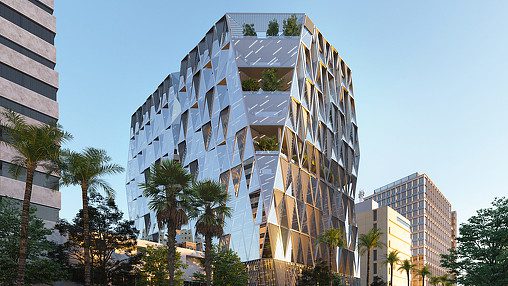Since it began making gradual changes in 2001, the company has invested millions to implement numerous projects related to conservation and sustainability. Over the years, these projects have helped Adobe reduce water use by 22%, landscape water use by 76%, electricity by 35%, and natural gas by 41%.
The 17-story Almaden Tower is part of Adobe’s LEED platinum-certified complex, which also consists of the 18-story West Tower and a 16-story East Tower. Adobe has (since early 2010) also started generating on-site energy by installing 20 upright Windspire turbines as part of a bigger plan to obtain renewable power supply for all their facilities.

It’s important to understand where energy is going and to meter as often as possible, explains Celia Hammond, CTG Energetics, LEED consultant for the Adobe Towers project. “Then you can see where you’re having issues, you can notice trends, and then use the data.” One of the project’s highlights was the development of a Web-based building monitoring and control system. The Intelligent Building Interface System (IBIS) allows Adobe staff to monitor and operate many different building controls with a single program. It also displays electricity, water, gas, UPS systems, data centers, and standby generators in real time. The staff has used the system to identify and correct problems, resulting in annual savings of $98,000.
Leadership in Energy and Environmental Design (LEED) is a green building certification program used worldwide. Developed by the non-profit U.S. Green Building Council (USGBC), it includes a set of rating systems for the design, construction, operation, and maintenance of green buildings, homes, and neighborhoods, which aims to help building owners and operators be environmentally responsible and use resources efficiently.
According to onegreenplanet.org; buildings.com and en.wikipedi. Source of photos: internet







